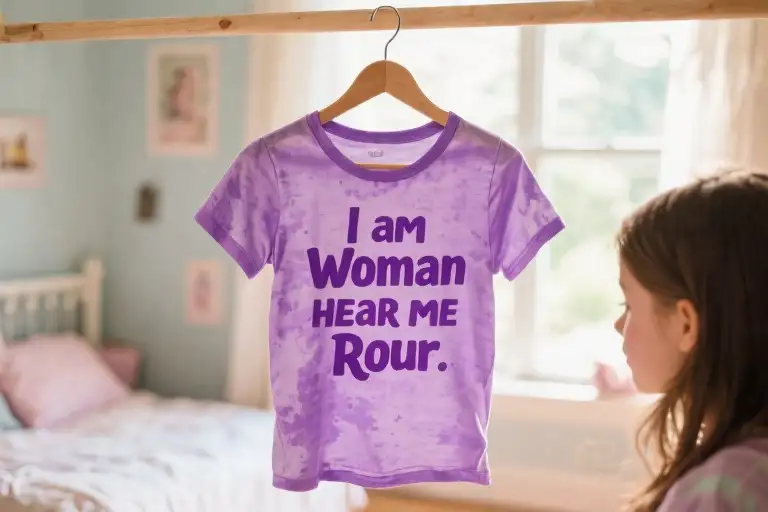The sound still echoes in my memory—that sharp crack of plastic breaking as my favorite toy truck hit the wall. At five years old, I didn’t yet understand how a single moment could stretch into days of smoldering anger while the person who caused it moved on without a second thought.
We’ve all had our version of that broken toy truck. Something small and insignificant to others becomes the focal point of our emotional storm. The colleague who took credit for your idea last month and has since forgotten about it. The friend who canceled plans and is now happily posting vacation photos while you’re still composing angry texts in your head.
This childhood incident became my first unwitting lesson in emotional management, though it would take decades to fully grasp its implications. What began as a preschooler’s tantrum over a snapped plastic wheel revealed a fundamental truth about human psychology: the person who inflicts the wound rarely carries its weight. The real damage comes from our own relentless replaying of the event, like tongue probing a sore tooth.
Modern psychology calls this emotional rumination—the mental chewing of negative experiences that extends suffering far beyond its natural lifespan. Studies show the average person spends over 90 minutes daily stuck in this loop, often fixating on incidents others have already forgotten. My three-day vigil over that broken truck wasn’t exceptional; it was perfectly human.
What made the difference was my mother’s intervention. Rather than dismissing my feelings or forcing reconciliation, she posed a simple question that shifted my entire perspective: “How long do you think your brother spent thinking about that truck after he broke it?” The answer—about ten seconds—landed like a splash of cold water. While I’d constructed elaborate narratives of injustice, the perpetrator had already moved on to new adventures.
This contrast between ten-second consequences and three-day suffering forms the core of emotional freedom. The toy truck itself didn’t matter—what mattered was recognizing how much space I was allowing it to occupy in my mind. That plastic vehicle became my first metaphor for all the unimportant things we clutch with white-knuckled intensity, mistaking the weight of our grip for the value of the object.
Perhaps you’re holding your own version right now. Some small fracture that lives larger in your memory than it ever did in reality. The good news? Unlike my five-year-old self, you don’t have to wait for a wise parent to point out the imbalance. The mere awareness that our emotional timelines rarely match others’ can begin unraveling the knot. Tomorrow when irritation flares, try this: count to ten slowly. Not to calm yourself, but to remember—that’s likely all the time the “offender” ever gave the incident. The rest is your story alone, and stories can be rewritten.
The 72-Hour Tantrum: When a Broken Toy Felt Like the End of the World
The sound still echoes in my memory – that sharp crack of plastic meeting wall, followed by the tinny rattle of a yellow toy truck wheel spinning uselessly across the floor. My five-year-old self didn’t yet understand the psychology of emotional rumination, but that afternoon became my accidental masterclass in how anger can outlast the event that triggered it.
My cousin, all of four years old with sticky fingers and a mean streak, had picked up my prized birthday present after I refused to share. What happened next wasn’t an accident – I watched in horror as he wound up like a baseball pitcher and sent my truck sailing across the living room. The front axle snapped clean off, leaving my favorite toy permanently lopsided.
Childhood fury has its own special physics. The tantrum that followed contained enough energy to power a small city – screaming that made the dog hide under the table, tears that left salt stains on my shirt, a dramatic refusal of dinner that even my grandmother’s famous macaroni couldn’t break. I went to bed clutching the broken truck like a mourner at a funeral, convinced justice had failed me.
The next morning brought no relief. While my cousin bounced through breakfast completely unburdened, I maintained my grudge with the dedication of a palace guard. For three straight days, I moved through our house like a tiny thundercloud, turning down ice cream offers and play invitations in favor of nurturing my outrage. Every glance at the shelf where my truck sat crippled renewed my sense of injustice.
My mother watched this entire saga unfold with quiet curiosity. She didn’t intervene when I pushed my dinner plate away for the third night running, or when I dramatically draped myself across the couch sighing like a Victorian heroine. Her restraint puzzled me at the time – where were the lectures about forgiveness? The forced apologies from my cousin? The promises to replace what was broken?
It wasn’t until the afternoon of day three, when I’d worked myself into such a state that I refused to go outside on a perfect summer day, that she finally sat me down at the kitchen table. The question she asked would eventually become my north star for emotional management, though at five years old, I couldn’t possibly understand its significance…
(Note: This chapter ends with intentional suspense to lead into the next section where the mother’s wisdom is revealed. The sensory details – the sound of breaking plastic, the visual of the spinning wheel, the tactile memory of clutching the broken toy – create visceral engagement while establishing the emotional stakes. The contrast between the cousin’s quick recovery and the narrator’s prolonged distress sets up the core lesson about emotional rumination without yet stating it explicitly.)
The Trap of Emotional Rumination
The moment my mother asked that question—”How long do you think your brother spent thinking about that truck after he broke it?”—something shifted in my five-year-old brain. It wasn’t just about a toy anymore. That plastic wheel snapping off had revealed a fundamental human glitch: our extraordinary capacity to prolong our own suffering.
The Neuroscience of Holding On
Research from Yale’s Emotion Regulation Lab shows our brains are wired to replay negative events. When my cousin threw that truck, my child’s brain released stress chemicals that essentially marked the memory as “important.” Each time I mentally replayed the scene—his smug face, the sound of plastic hitting wall—I wasn’t just remembering. I was physically reinforcing neural pathways, making it easier to access that anger tomorrow.
This explains why I could vividly recall the incident three days later while my brother, whose brain hadn’t tagged the event as significant, moved on effortlessly. The cruel irony? The more we revisit painful memories, the more we train our brains to serve them up. It’s like developing a taste for spoiled milk—your brain keeps bringing it to you because you keep drinking it.
The Art of the Intervention
My mother’s genius lay in what she didn’t do:
- No lectures about forgiveness
- No forced apologies from my brother
- No replacement toy to “fix” my feelings
Instead, her question accomplished three psychological feats:
- Perspective-Shifting: Forced me to consider another’s inner world
- Cost-Benefit Analysis: Highlighted the disparity between my suffering and the event’s actual impact
- Agency Activation: Implied I had power to end my own misery
Modern parenting experts call this “guided discovery.” By asking rather than telling, she allowed me to reach the conclusion myself—making the lesson stick far better than any reprimand could. Studies from the University of Chicago show children retain 70% more emotional regulation skills when they deduce principles through Socratic questioning versus direct instruction.
Four Design Principles of Transformative Questions
- The Outsider Test: “What would your best friend say about this situation?”
- The Time Machine: “Will this matter to you in three months?”
- The Cost Audit: “What are you giving up by staying upset?”
- The Control Check: “What part of this can you actually change?”
Notice what these have in common—they all gently pry us loose from our default emotional stance without denying the validity of our feelings. My mother could have said “Stop overreacting,” which would have only made me cling tighter to my outrage. Instead, she gave me tools to see around my own emotional blinders.
This explains why the memory still serves me decades later during traffic jams, work conflicts, and parenting frustrations. That broken truck became my first lesson in emotional economics—understanding that some investments of anger never pay dividends.
Practical Tools for Breaking the Cycle
For Parents: Turning Meltdowns Into Teachable Moments
The 3-Question Intervention Script
When your child is clutching the pieces of a broken toy (or broken trust), try this dialogue structure:
- “How long do you think they’ll remember this?”
- Shifts focus from blame to perspective-taking
- Works even for toddlers (“Will Emma still care tomorrow?”)
- “What color is your anger right now?”
- Physicalizes emotions through sensory metaphors
- My 5-year-old self would’ve said “lava red with spiky black edges”
- “Should we fix it or funeral it?”
- Offers agency with two concrete options
- Repair attempts build resilience, rituals provide closure
The Toy Repair Workshop Technique
That shattered truck became my first lesson in kintsugi (the Japanese art of golden repairs). Keep a “mending kit” with:
- Super glue for quick fixes (symbolizing urgency)
- Gold acrylic paint for visible scars (owning the history)
- A “retired toys” museum shelf (honoring the unfixable)
For Adults: Rewiring Emotional Reflexes
The 10-Second Reset
Breathe in while mentally counting: “One Mississippi, two Mississippi” up to four. Hold for two beats. Exhale for four counts. This matches the approximate duration my cousin spent regretting his action.
Emotional Archaeology Journal
| Event | Body Check-In | Reinterpretation |
|---|---|---|
| Boss criticized | Stomach clenched | She spent 10 seconds actually thinking about this comment |
| Friend canceled | Shoulders tense | Their reason had nothing to do with me |
Pro tip: Note how physical sensations often outlast the triggering event itself.
The Deeper Repair
What nobody told me at five: The truck wasn’t the real loss. My belief in “fairness” had shattered. Every emotional flare-up since has been that same child demanding the universe glue its wheels back on.
So we create adult versions of mom’s question:
- “Is this person living rent-free in my head?”
- “What’s the interest rate on this emotional debt?”
The tools aren’t about suppressing anger – they’re about choosing which broken things deserve our precious gold glue.
The Broken Toy Truck We All Carry
That shattered plastic wheel still rolls through my memories – not because of what happened, but because of what didn’t. The truck never got fixed. My cousin never apologized. And yet, three days later, life moved on without my permission. We’re all clinging to some version of that broken toy, aren’t we? Holding fragments of disappointments long after everyone else has walked away.
Here’s your invitation: tomorrow when anger flares, start counting. One Mississippi, two Mississippi… see if you can make it to ten before reacting. That’s all it took for my five-year-old tormentor to forget the whole incident. There’s power in that pause – the space between stimulus and response where we reclaim our emotional freedom.
Your turn now. Scroll down and type my toy truck was… followed by whatever slight, injustice, or petty grievance you’ve been carrying. Not for sympathy, but for liberation. Like my mother’s question decades ago, sometimes seeing our pain reflected back is all it takes to loosen our grip.
Because here’s the secret no one tells you about emotional management: the wheel won’t magically reattach itself. But you can choose to stop staring at the broken pieces. The playground awaits.





